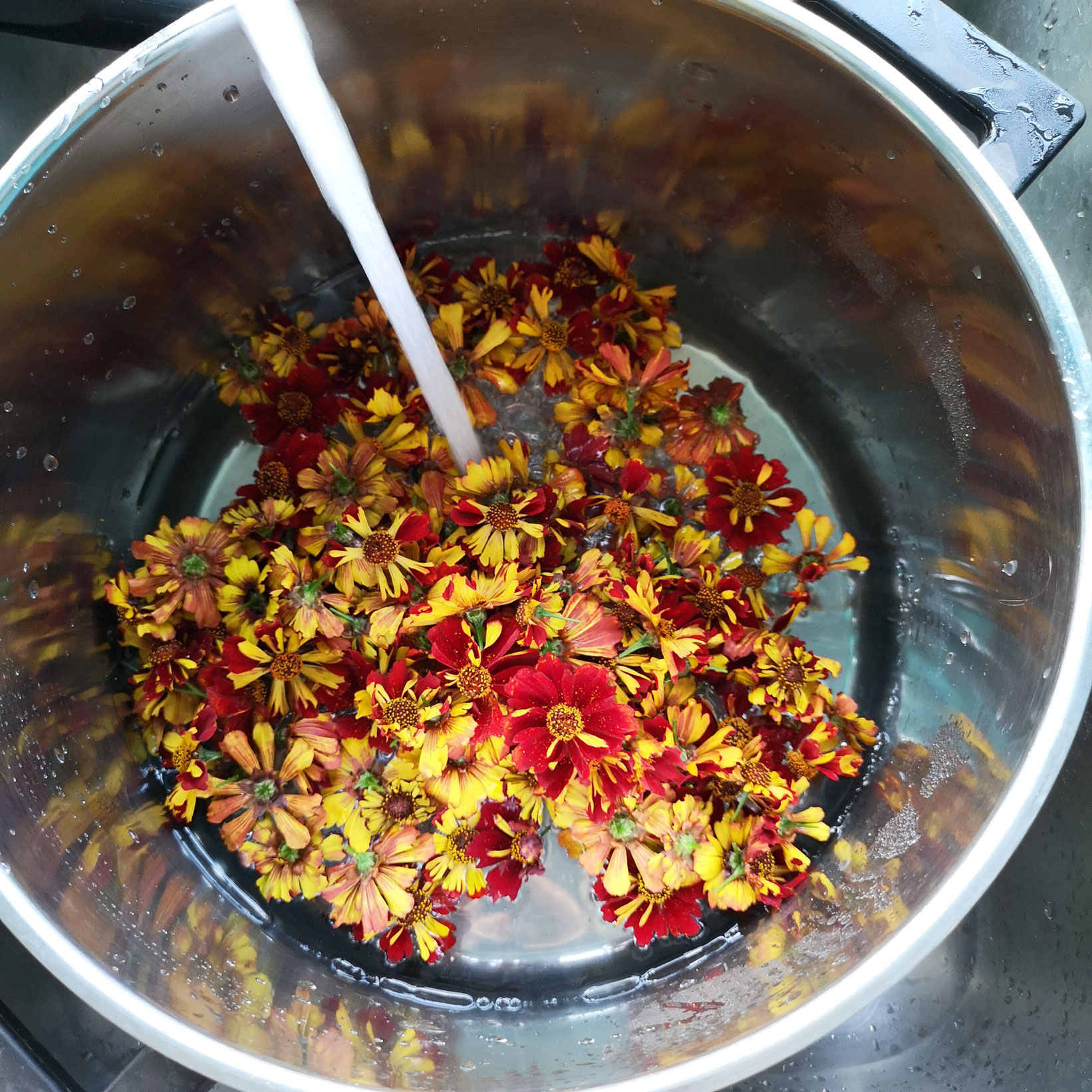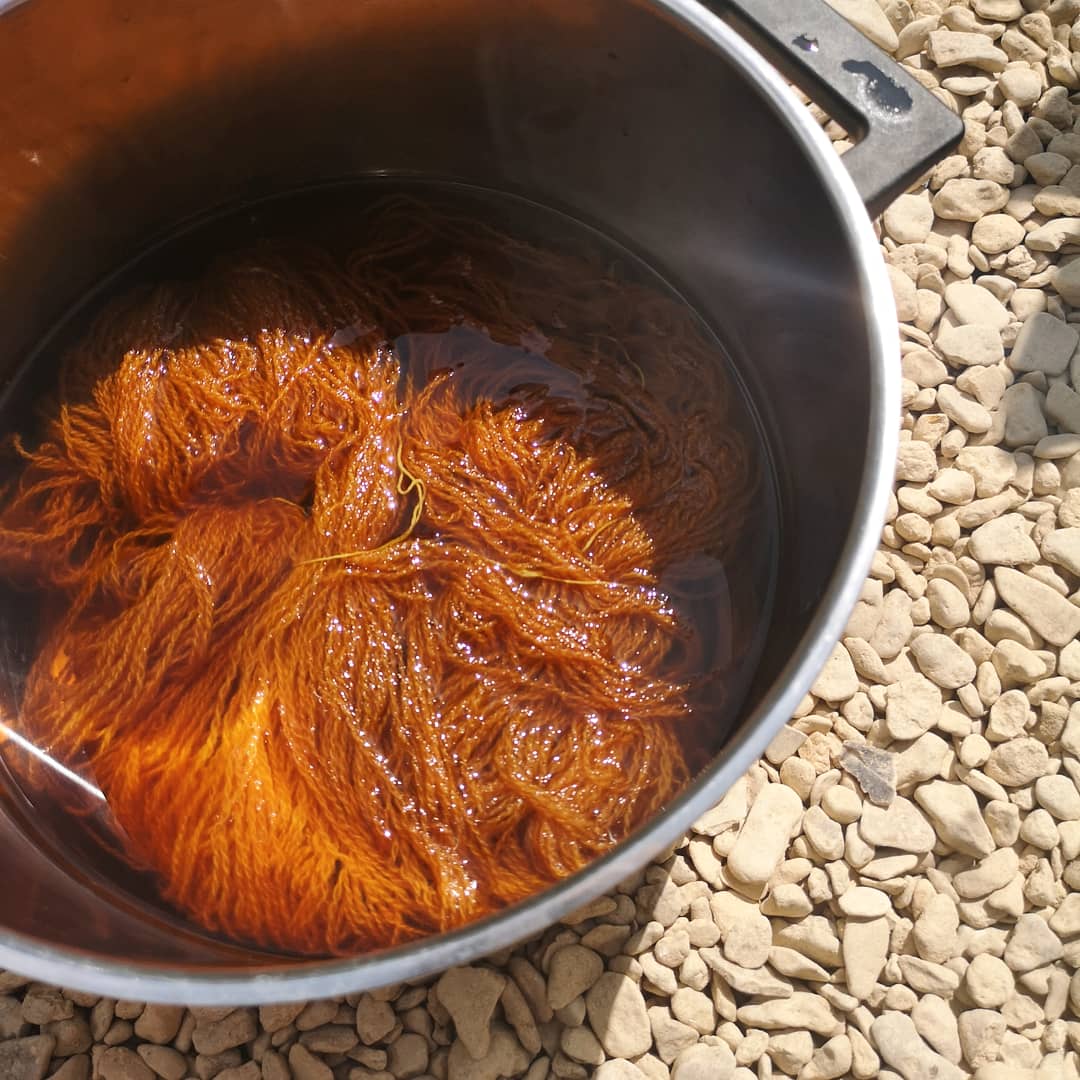Dyeing with Coreopsis Tinctoria Flowers - Fresh from the Garden!
I’ve got about 15 Coreopsis Tinctoria plants in the dye garden, and they just have started flowering rather prolifically! The variety is ‘Roulette’, which gives a few different types of yellow and red blooms (seeds purchased from Chiltern Seeds).
I’ve been picking blooms daily and drying them until I have enough for a dye bath. On a particularly sunny Saturday, I picked 50g of flowers, so decided to make a fresh dye bath to test the colour potential in these flowers.
To prepare the flowers, I removed any long bits of stalk so as not to contaminate the colours, but kept the flowers whole. I added them to a pot with water, which I heated to a simmer for an hour, then left to cool overnight. The next day, I strained the liquid through a muslin to remove any bits of plant material - this is optional but it stops you from getting bits of plant stuck in the yarn!
100g of alum mordanted wool yarn was then added to the dyepot. I then reheated the pot to a simmer for an hour, again leaving to cool overnight.
I then let the skein of yarn dry on the washing line without having rinsed it first - I’ve found that this helps the yarn retain more of the colour. Once the yarn was dry I then rinsed and washed it in a pH neutral soap.
As you can see below the resulting colour is just stunning! I really didn’t expect to get this vibrant an orange from only half the weight of plant to fibre. It will be interesting to see how dyeing with the flowers I have dried will compare…
If you’ve enjoyed reading this blog and found it helpful, why not buy me a virtual coffee on Ko-Fi? There’s no obligation, but your support will help me continue to write these blogs and help me continue my natural dye journey. Ria :)





